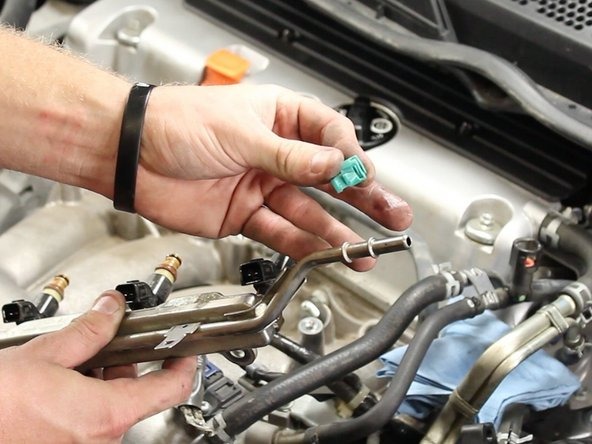A Comprehensive Guide to Checking the Fuel Injection System on Your Car

Maintaining a well-functioning fuel injection system is critical for your car’s overall performance. This comprehensive guide is designed to walk you through the key steps in inspecting and ensuring the efficiency of your vehicle’s fuel injection system. From visual checks to assessing fuel pressure, this guide provides essential insights for keeping your engine running smoothly and optimizing fuel consumption. Let’s dive into the details of a comprehensive examination for a reliable and high-performing fuel injection system.

Contents
- 1 Understand the Fuel Injection System
- 2 Gather the Necessary Tools and Equipment
- 3 Perform a Visual Inspection
- 4 Check Fuel Pressure
- 5 Test Fuel Injectors
- 6 Inspect Injector Spray Pattern
- 7 Scan for Error Codes
- 8 Clean or Replace Components
- 9 Consult a Professional Mechanic
- 10 Mastering the Art of Fuel Injection System Inspection – A Comprehensive Guide
Understand the Fuel Injection System
Before diving into the inspection process, it’s essential to have a basic understanding of how the fuel injection system works. The fuel injection system replaces carburetors in modern cars, delivering fuel directly into the engine cylinders. It consists of several components, including the fuel pump, fuel injectors, fuel pressure regulator, and the engine control unit (ECU).
Gather the Necessary Tools and Equipment
To effectively check the fuel injection system, you will need a few tools and equipment. Here is a list of items you should have before proceeding:
- Safety goggles
- Protective gloves
- Fuel pressure gauge
- Multimeter
- OBD-II scanner
- A set of wrenches and screwdrivers
- Clean rags or shop towels
Perform a Visual Inspection
Start by visually inspecting the fuel injection system for any obvious signs of damage or leaks. Check for loose hoses, damaged wires, or any fuel stains around the injectors or fuel lines. Take note of any irregularities as these might require further investigation.
See more: How Often Should You Regularly Maintain Your Car?
Check Fuel Pressure
Fuel pressure plays a crucial role in the proper functioning of the fuel injection system. To check the fuel pressure, follow these steps:
- Locate the Schrader valve on the fuel rail. It resembles a valve stem on a tire.
- Attach the fuel pressure gauge to the Schrader valve.
- Turn the ignition key to the “ON” position without starting the engine.
- Observe the fuel pressure reading on the gauge.
- Compare the obtained reading with the manufacturer’s specifications. If it falls outside the recommended range, there might be an issue with the fuel pump or pressure regulator.
Test Fuel Injectors
Fuel injectors can become clogged or malfunction over time, affecting engine performance. Here’s how you can test your car’s fuel injectors:
- Start by disconnecting the electrical connector from each fuel injector.
- Use a multimeter to measure the resistance across each injector’s terminals.
- Compare the readings with the manufacturer’s specifications. If there is a significant deviation, it might indicate a faulty injector.
- Reconnect the electrical connectors.
Inspect Injector Spray Pattern
An uneven or improper spray pattern from the fuel injectors can disrupt combustion and lead to decreased engine performance. To inspect the injector spray pattern, perform the following steps:
- Start the engine and let it reach operating temperature.
- Carefully disconnect one injector electrical connector at a time while observing any changes in engine idle speed.
- Reconnect each injector and repeat the process for all injectors.
- Any noticeable changes in idle speed while disconnecting an injector might indicate an issue with that particular injector.
Scan for Error Codes
Modern cars are equipped with On-Board Diagnostics II (OBD-II) systems that monitor various aspects of vehicle performance. Use an OBD-II scanner to check for any stored error codes related to the fuel injection system. Write down any codes found and research their meanings to identify potential issues.
Clean or Replace Components
If you have identified any faulty components during the inspection process, it is crucial to address them promptly. In some cases, cleaning or replacing specific parts, such as clogged injectors or a malfunctioning fuel pressure regulator, can resolve issues with the fuel injection system.
Consult a Professional Mechanic
If you are unable to identify or resolve any issues with your car’s fuel injection system, it is recommended to consult a professional mechanic. They have specialized knowledge and equipment to diagnose and repair complex problems associated with the fuel injection system.
Mastering the Art of Fuel Injection System Inspection – A Comprehensive Guide
Regularly checking your car’s fuel injection system is essential for maintaining optimal engine performance and preventing potential issues down the road. By following the step-by-step guide outlined in this blog post, you can effectively inspect and troubleshoot your car’s fuel injection system. Remember, if you encounter any difficulties or are unsure about any aspect of the inspection process, it is always best to seek professional assistance to ensure your car runs smoothly and efficiently for years to come.
See more news at: car care vip





































